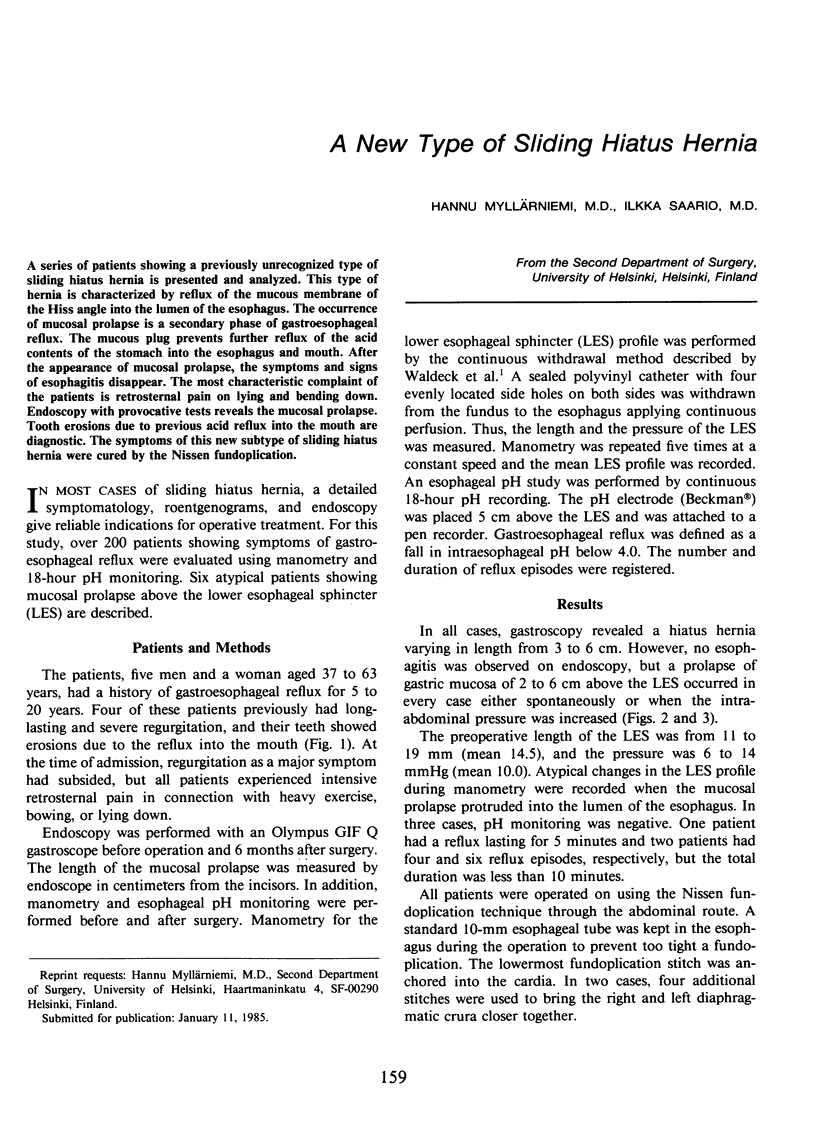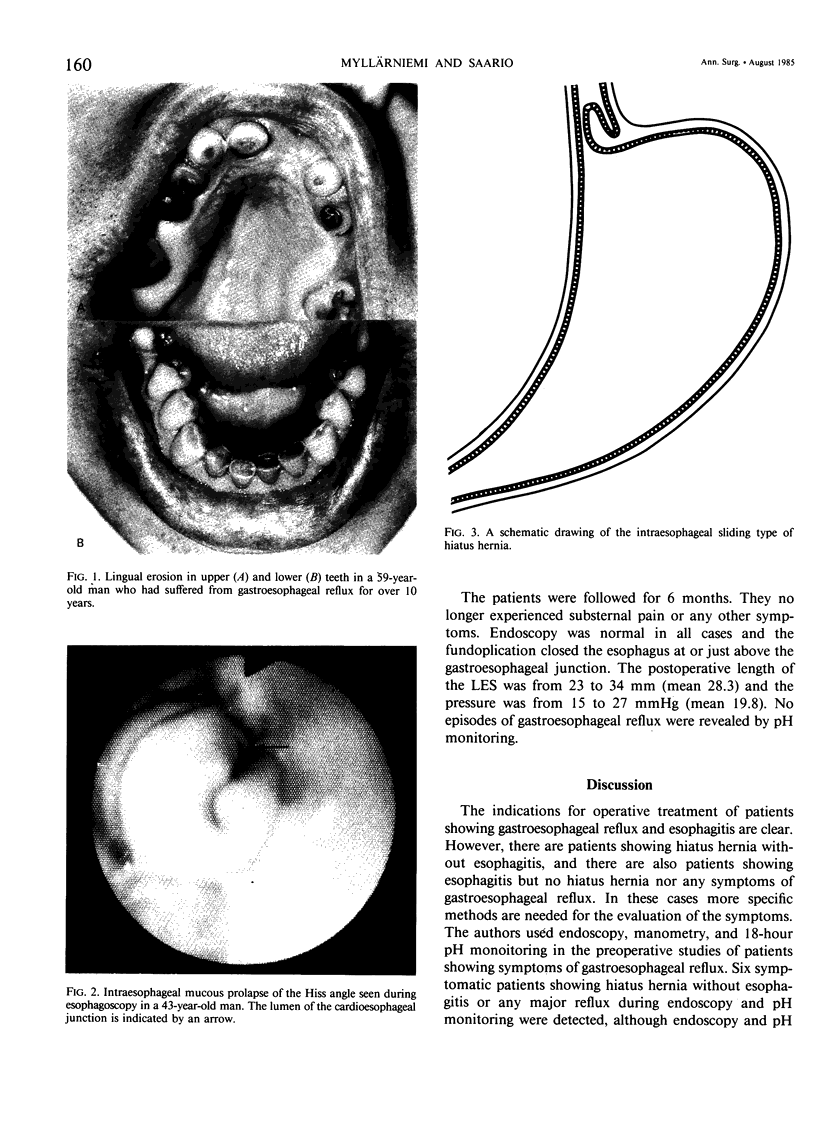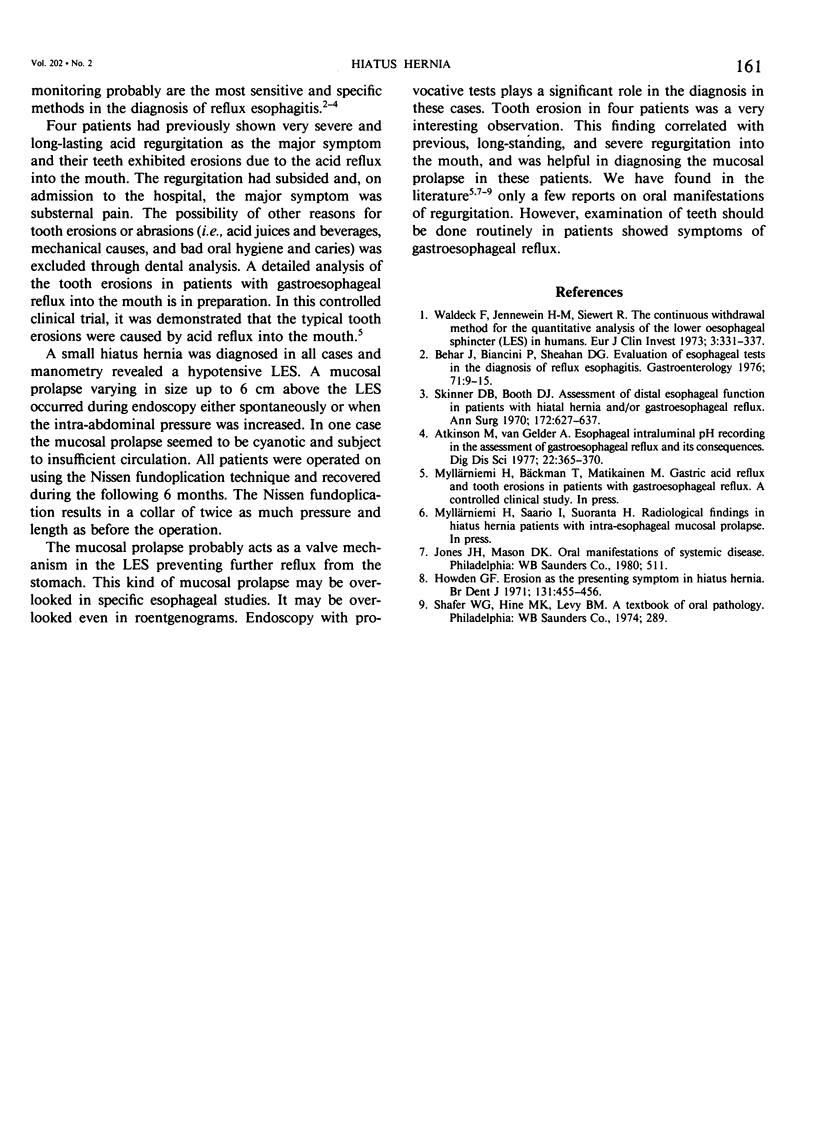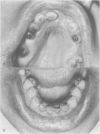Abstract
A series of patients showing a previously unrecognized type of sliding hiatus hernia is presented and analyzed. This type of hernia is characterized by reflux of the mucous membrane of the Hiss angle into the lumen of the esophagus. The occurrence of mucosal prolapse is a secondary phase of gastroesophageal reflux. The mucous plug prevents further reflux of the acid contents of the stomach into the esophagus and mouth. After the appearance of mucosal prolapse, the symptoms and signs of esophagitis disappear. The most characteristic complaint of the patients is retrosternal pain on lying and bending down. Endoscopy with provocative tests reveals the mucosal prolapse. Tooth erosions due to previous acid reflux into the mouth are diagnostic. The symptoms of this new subtype of sliding hiatus hernia were cured by the Nissen fundoplication.
Full text
PDF


Images in this article
Selected References
These references are in PubMed. This may not be the complete list of references from this article.
- Atkinson M., Van Gelder A. Esophageal intraluminal pH recording in the assessment of gastroesophageal reflux and its consequences. Am J Dig Dis. 1977 Apr;22(4):365–370. doi: 10.1007/BF01072195. [DOI] [PubMed] [Google Scholar]
- Behar J., Biancani P., Sheahan D. G. Evaluation of esophageal tests in the diagnosis of reflux esophagitis. Gastroenterology. 1976 Jul;71(1):9–15. [PubMed] [Google Scholar]
- Howden G. F. Erosion as the presenting symptom in hiatus hernia. A case report. Br Dent J. 1971 Nov 16;131(10):455–456. doi: 10.1038/sj.bdj.4802772. [DOI] [PubMed] [Google Scholar]
- Skinner D. B., Booth D. J. Assessment of distal esophageal function in patients with hiatal hernia and-or gastroesophageal reflux. Ann Surg. 1970 Oct;172(4):627–637. doi: 10.1097/00000658-197010000-00009. [DOI] [PMC free article] [PubMed] [Google Scholar]
- Waldeck F., Jennewein H. M., Siewert R. The continuous withdrawal method for the quantitative analysis of the lower oesophageal sphincter (LES) in humans. Eur J Clin Invest. 1973 Jul;3(4):331–337. doi: 10.1111/j.1365-2362.1973.tb00359.x. [DOI] [PubMed] [Google Scholar]




